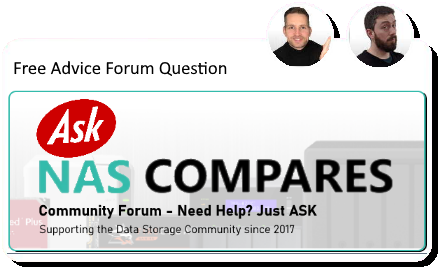09-27-2024, 12:00 PM
I retired a few months ago and finally have time, ... but no money. In this scenario, I started planning and building a home NAS based on Proxmox and OMV. Despite my background in computer programming and security, I've had no previous experience with NAS. No wonder I find your internet channel and reviews so valuable. Thank you for your excellent work from a subscriber.
I am currently in love with UnRaid and the Lincstation N1 seems like a cheap, almost ideal option, but I have some doubts:
- According to your tests, what is the maximum speed I need for M.2s/2.5s units? Is there an ideal buy for the six discs?
- Which format do you recommend? Can I have problems recovering encrypted units in a disaster scenario?
- How many discs should I configure as "cache"? What is the minimum capacity for each?
- What kind of data should I store in the cache and in the M.2 and 2.5 units?
Can you please help me solve my questions and give me some recommendations? Thanks in advance!!
I am currently in love with UnRaid and the Lincstation N1 seems like a cheap, almost ideal option, but I have some doubts:
- According to your tests, what is the maximum speed I need for M.2s/2.5s units? Is there an ideal buy for the six discs?
- Which format do you recommend? Can I have problems recovering encrypted units in a disaster scenario?
- How many discs should I configure as "cache"? What is the minimum capacity for each?
- What kind of data should I store in the cache and in the M.2 and 2.5 units?
Can you please help me solve my questions and give me some recommendations? Thanks in advance!!





